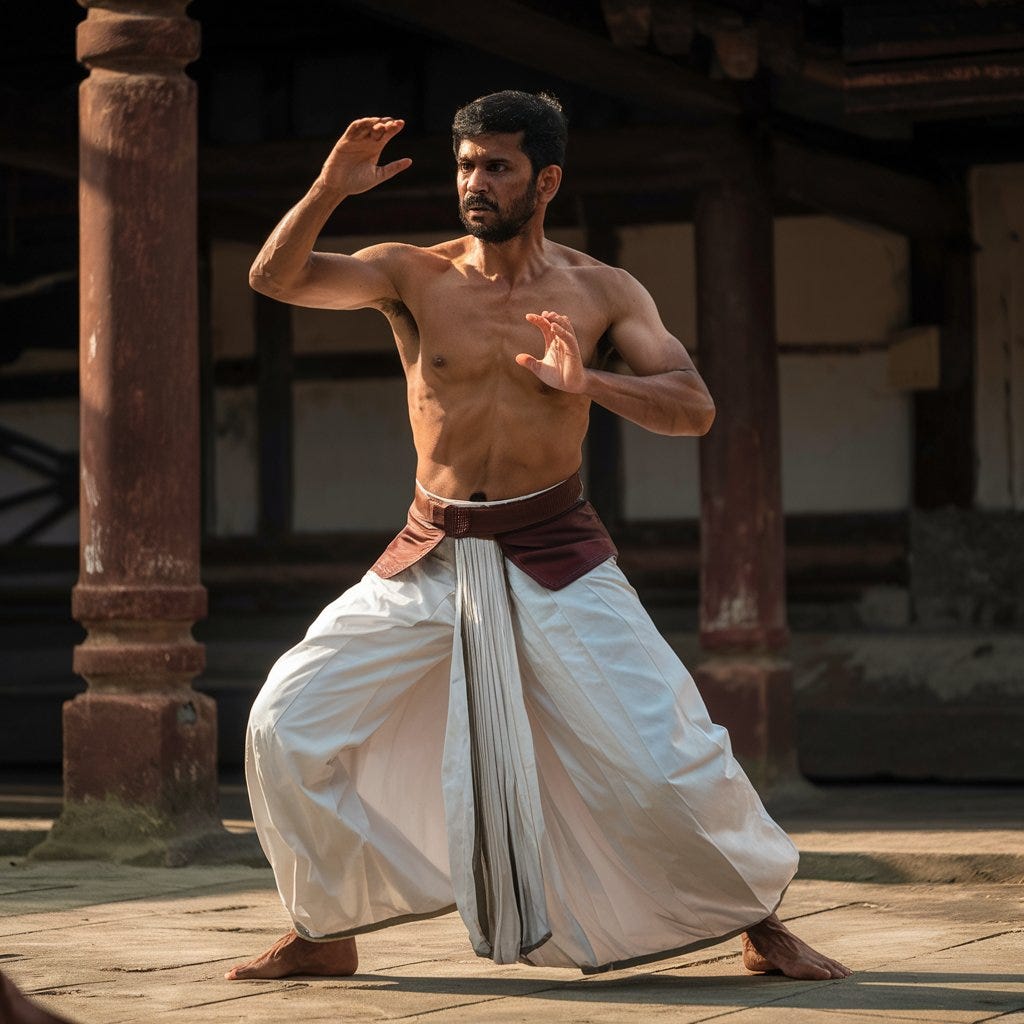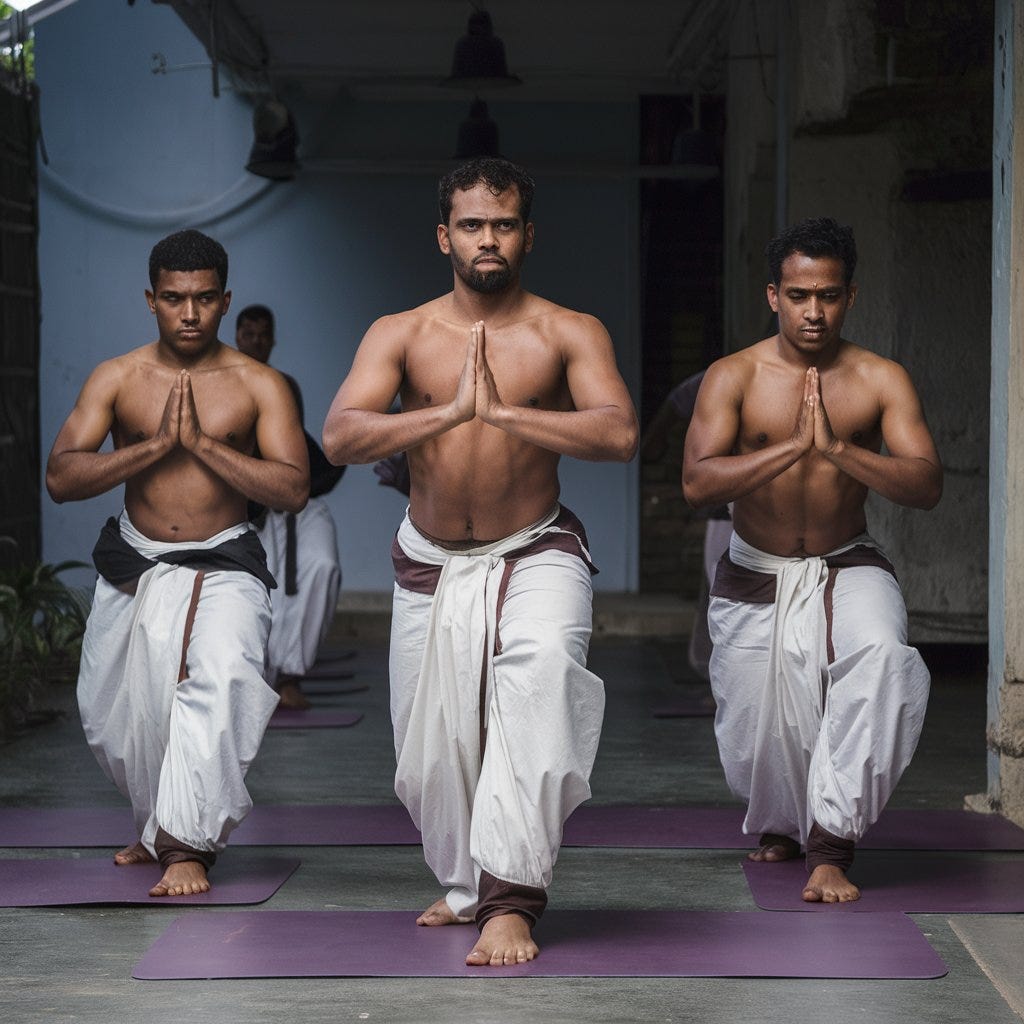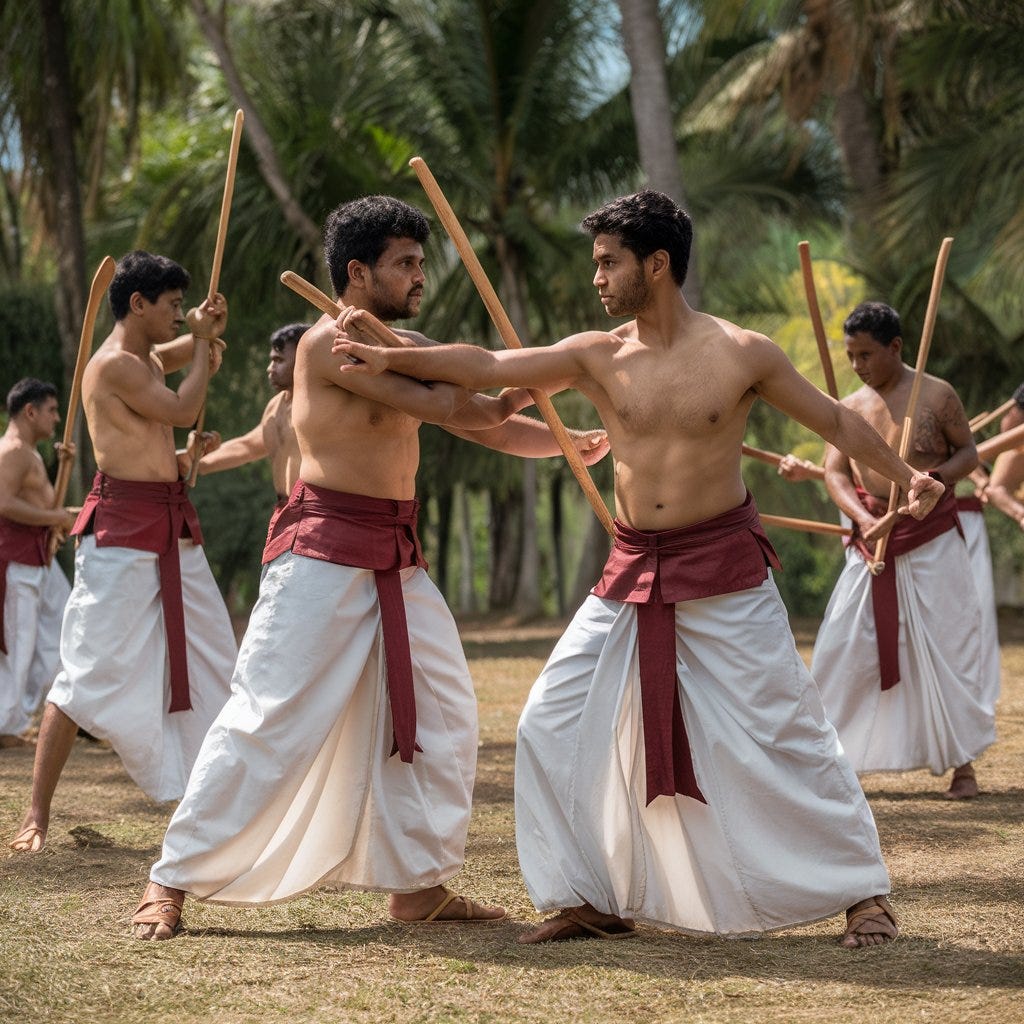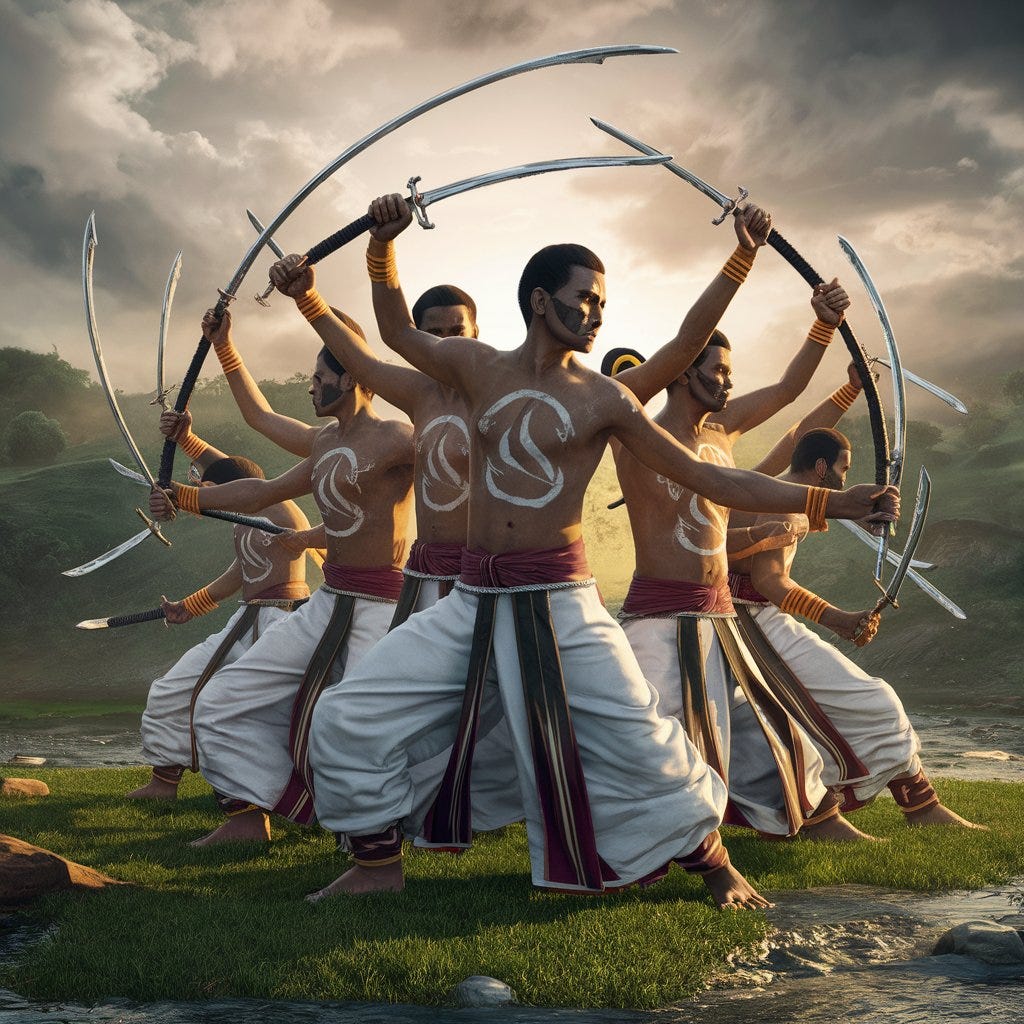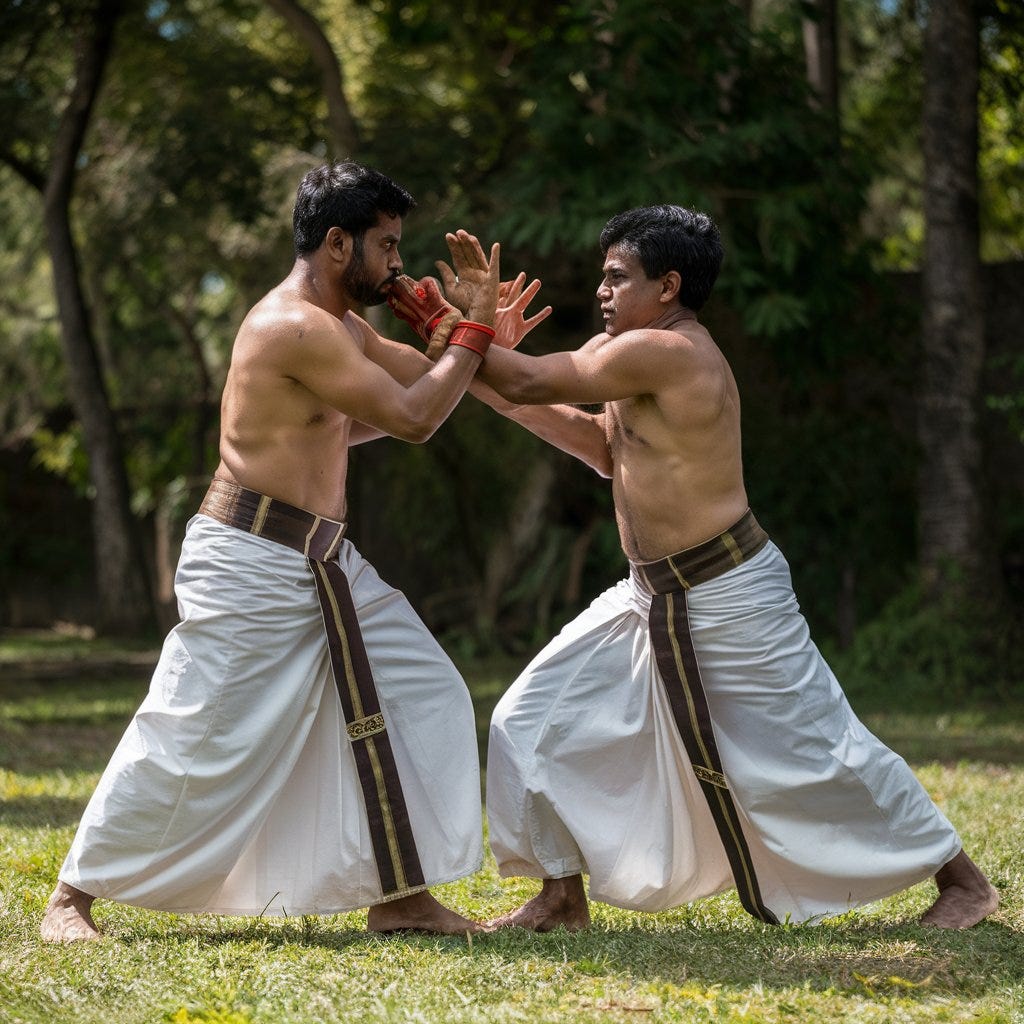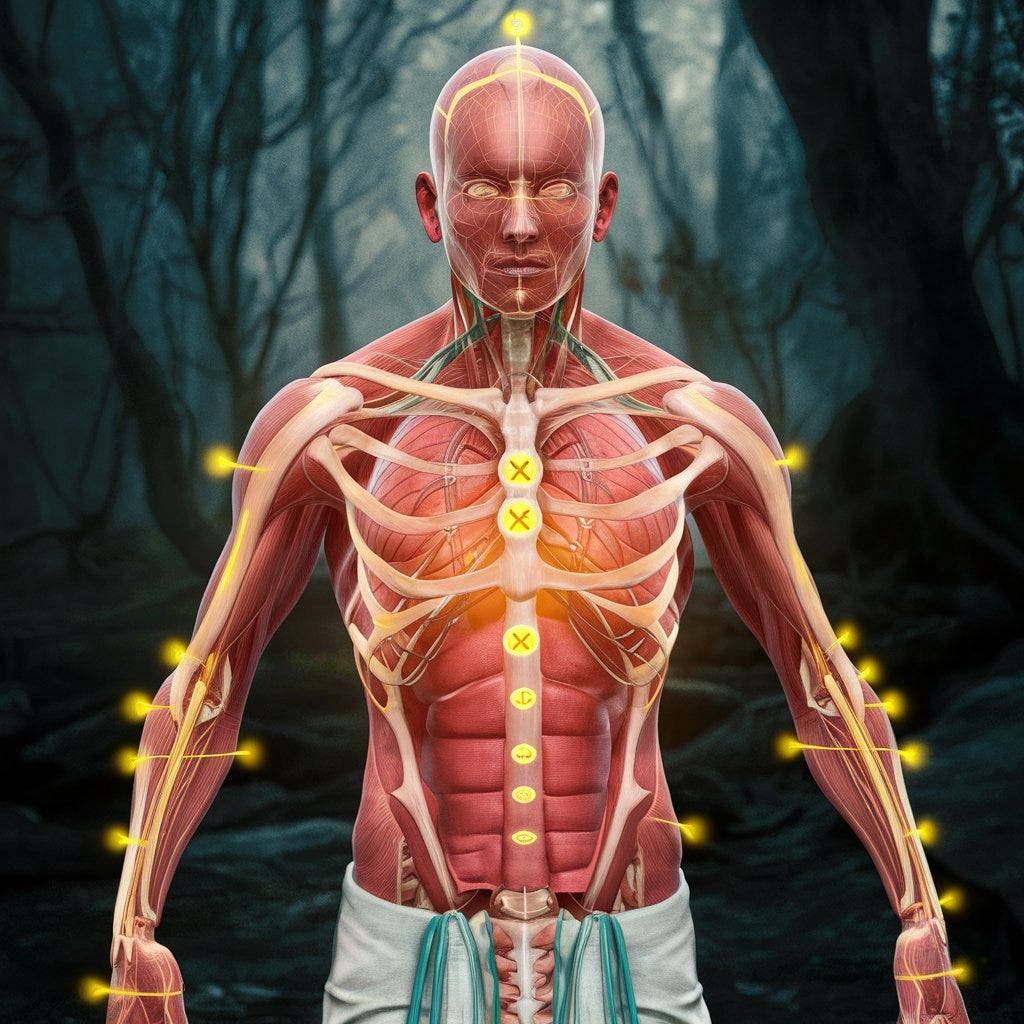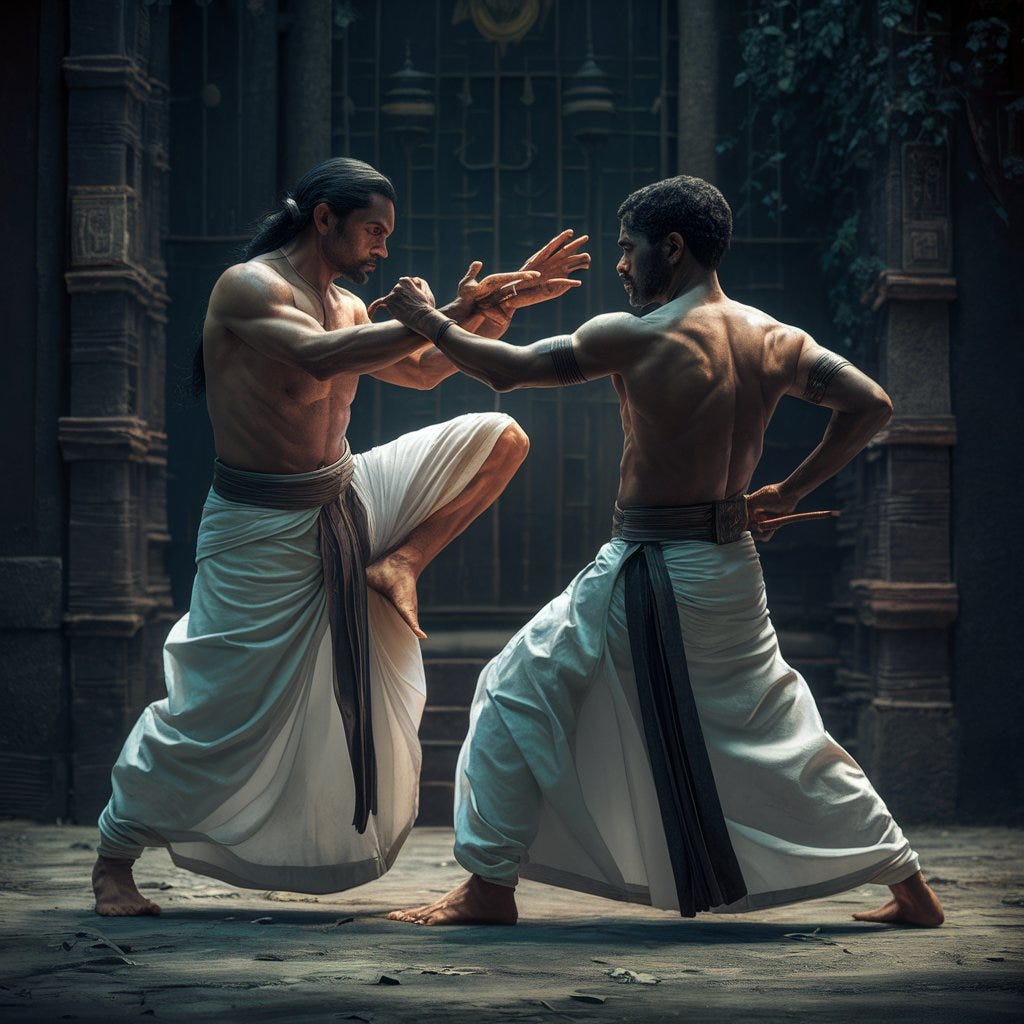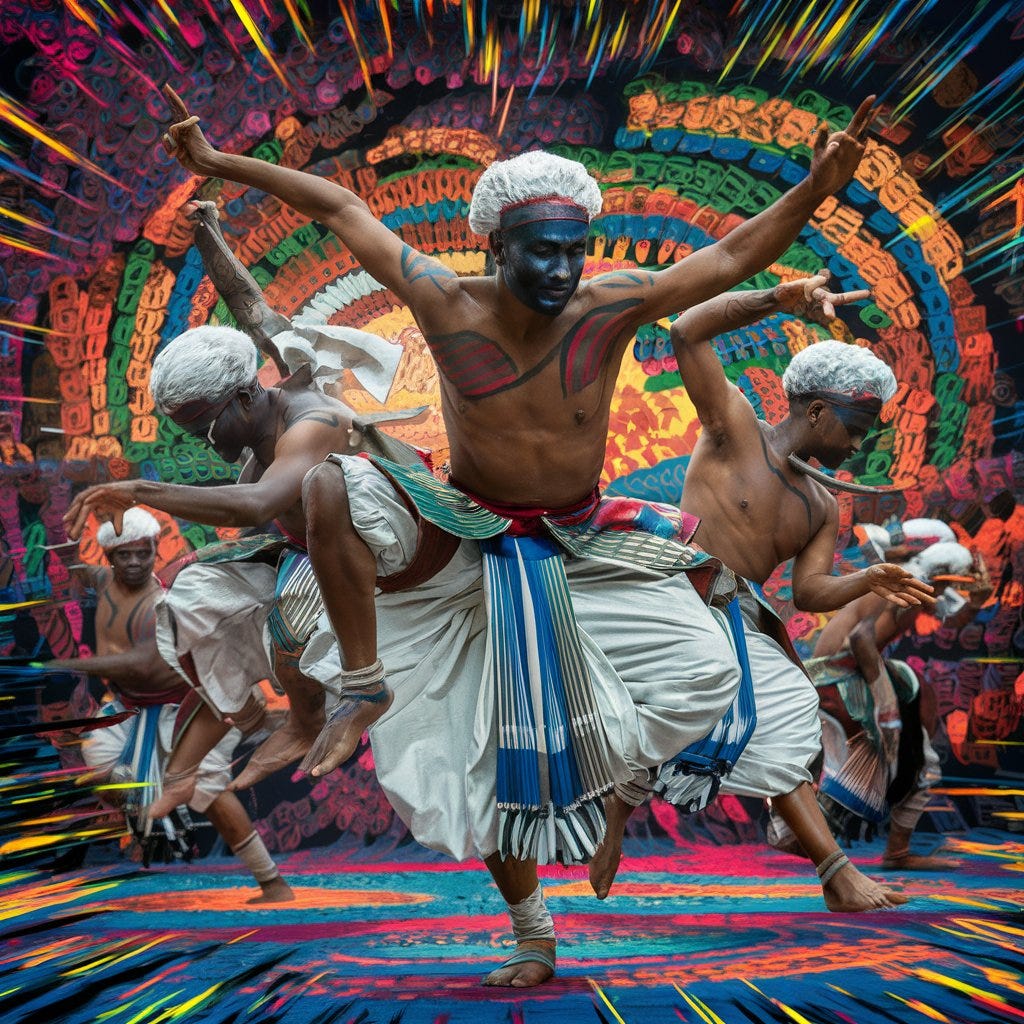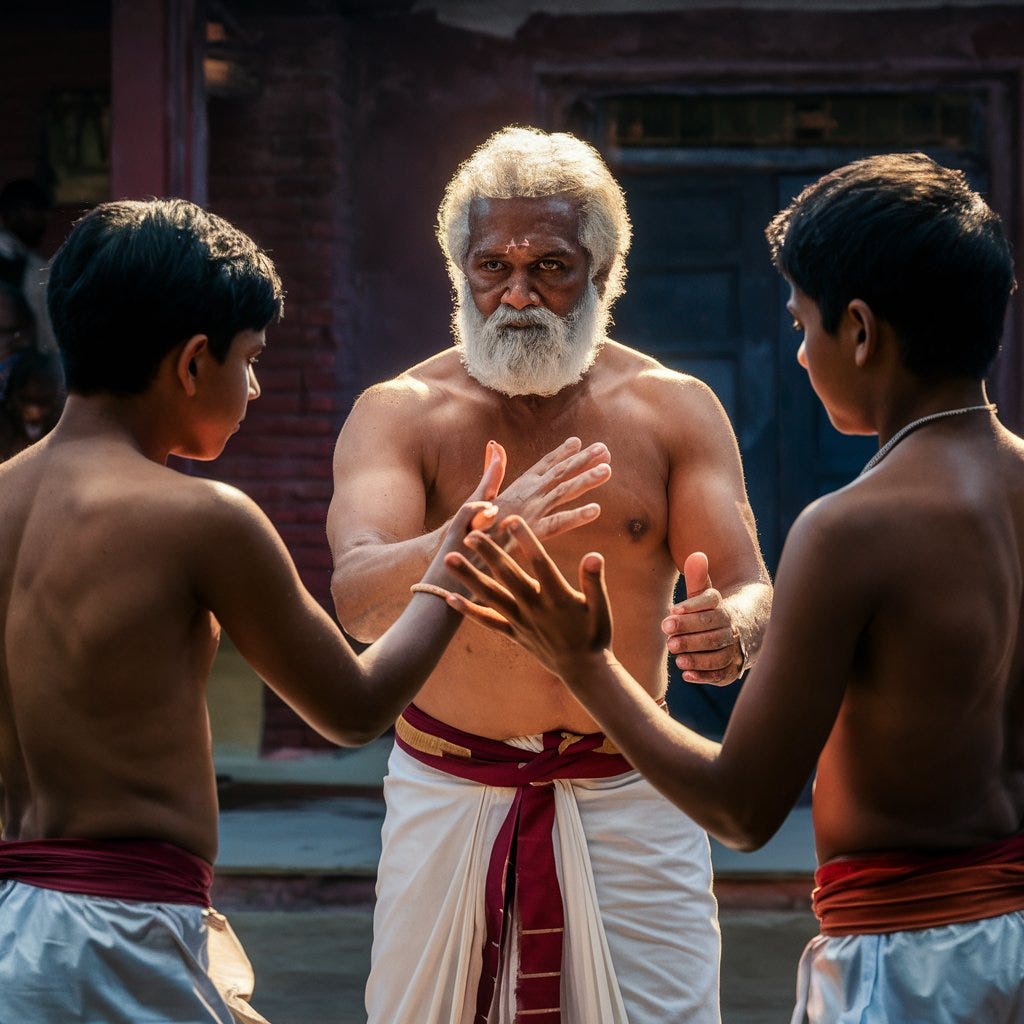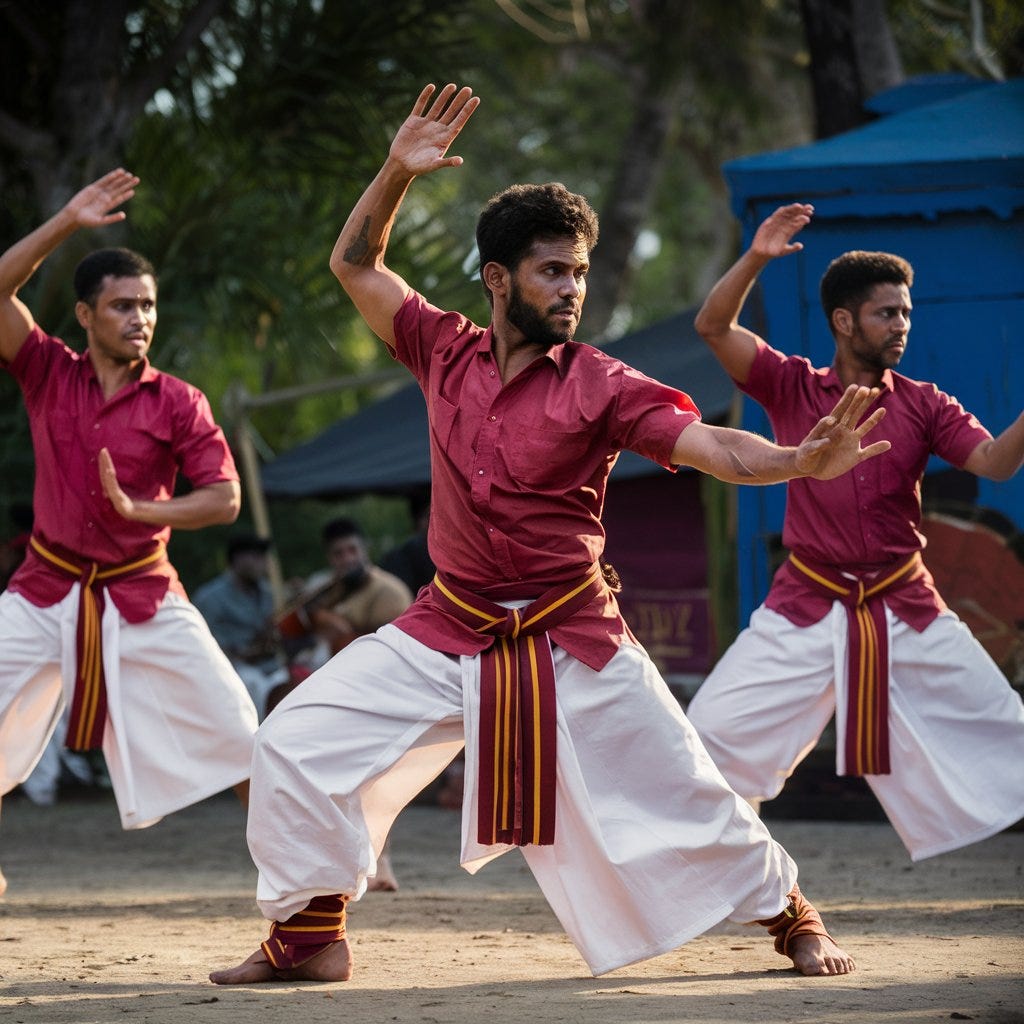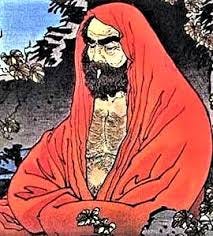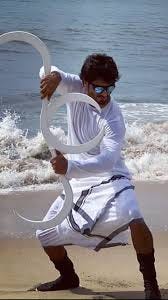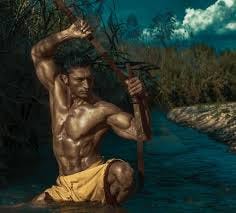Kalaripayattu: The Ancient Art of Warrior Wisdom
Journey Through India's Oldest Martial Art and Its Enduring Legacy
Embedded within the rich tapestry of Indian culture lies Kalaripayattu, a martial art as ancient as the land itself. Rooted in tradition, philosophy, and combat prowess, Kalaripayattu offers a profound insight into the depths of India's martial heritage. In this comprehensive exploration, we delve into the origins, principles, techniques, cultural significance, and legacy of Kalaripayattu.
1. Origins and History: Kalaripayattu finds its genesis in the verdant landscapes of Kerala, where it emerged as a synthesis of indigenous martial traditions and cultural exchanges. The term "Kalari" itself refers to the training ground where practitioners hone their skills, symbolizing the sacred space where warriors embark on their journey of physical and spiritual transformation. Over millennia, Kalaripayattu evolved into a sophisticated system of combat, revered for its effectiveness and depth.
2. Principles and Philosophy: At its core, Kalaripayattu embodies a holistic philosophy that emphasizes balance, flexibility, and the harmonious integration of mind, body, and spirit. The term "Prana" encapsulates the vital life force that animates all beings, and practitioners learn to channel this energy through breath control, meditation, and disciplined practice. Kalaripayattu is more than just a martial art; it is a way of life, guiding practitioners on a path of self-discovery, personal growth, and moral integrity.
3. Techniques and Training: Kalaripayattu boasts a diverse repertoire of techniques, encompassing strikes, kicks, grappling, and weapon combat. Training begins with rigorous physical conditioning exercises designed to build strength, agility, and endurance. As students progress, they delve into the intricacies of traditional weapons such as the sword (vaal), staff (kettukari), and flexible sword (urumi), mastering their use with precision and skill. Kalaripayattu training is characterized by its dynamic and fluid movements, which reflect the natural rhythms of the body and the environment.
4.Elements of Kalaripayattu: The practice of Kalaripayattu included the following elements.
Meipayattu (Body Conditioning):
The foundational level of Kalaripayattu, Meipayattu focuses on conditioning the body through rigorous exercises, stretches, and stances. Practitioners build strength, flexibility, and agility while learning to control their breath and posture.
Kolthari (Wooden Weapons):
In Kolthari, practitioners learn to wield wooden weapons such as the staff (kettukari) and stick (ottakol) with precision and skill. Training involves mastering basic strikes, blocks, and defensive maneuvers, laying the groundwork for weapon combat.
Ankathari (Metal Weapons):
Ankathari introduces practitioners to the art of wielding metal weapons, including swords (vaal), daggers (katar), and flexible swords (urumi). Students refine their techniques and develop dexterity while learning to handle these deadly implements.
Verumkai (Bare-Hand Combat):
Verumkai focuses on unarmed combat techniques, teaching practitioners how to strike, grapple, and defend themselves without weapons. Students learn to use their hands, feet, and body as effective tools in close-quarters combat.
Marma Shastra (Vital Points):
Marma Shastra delves into the study of vital points or "marmas" in the body, teaching practitioners how to target specific areas for maximum impact and efficiency. Mastery of Marma Shastra enhances combat effectiveness and self-defense capabilities.
Unarmed Combat (Adi Murai):
Adi Murai encompasses advanced techniques of unarmed combat, combining fluid movements, joint locks, and pressure points to overcome opponents. Practitioners develop heightened reflexes, spatial awareness, and adaptability in combat situations.
Agility and Performance (Kalari Pattu):
Kalari Pattu represents the culmination of Kalaripayattu training, where practitioners showcase their skills through dynamic performances combining martial arts, music, and dance. These captivating displays celebrate the art's heritage and cultural significance while inspiring audiences with tales of valor and tradition.
Each part of Kalaripayattu contributes to a practitioner's journey of growth, discipline, and self-discovery. It also involved elements of natural medicine.
5. Cultural Significance: In Indian society, Kalaripayattu holds profound cultural significance, transcending its martial origins to become a cherished symbol of tradition and heritage. The "Kalari Pattu" performances, blending martial techniques with music, dance, and storytelling, serve as a vibrant expression of India's rich cultural tapestry. Through these performances, Kalaripayattu practitioners pay homage to the valor, heroism, and spiritual wisdom embodied by their ancestors.
6. Decline and Revival: Despite its storied history, Kalaripayattu faced a period of decline during the colonial era, as external influences and social changes threatened to erode its legacy. However, in recent decades, there has been a resurgence of interest in Kalaripayattu, fueled by a growing appreciation for India's cultural heritage and a desire to preserve ancient traditions. Today, efforts are underway to revive and promote Kalaripayattu, both within India and on the global stage, ensuring that this ancient art form continues to thrive for generations to come.
7. Kalaripayattu: The Mother of All Martial Arts: Kalaripayattu is often hailed as the "mother of all martial arts" due to its profound influence on the development of combat systems around the world. From the graceful movements of Chinese Kung Fu to the disciplined techniques of Japanese Karate, traces of Kalaripayattu can be found in martial arts traditions across Asia. Bodhidharma, an Indian monk credited with introducing martial arts to China, is said to have been a practitioner of Kalaripayattu, further cementing its legacy as the fountainhead of martial prowess.
8. Notable Practitioners: Throughout history, Kalaripayattu has produced a lineage of legendary practitioners who have achieved mastery in the art. Among them, Gurukkal Raghavan Pillai is renowned for his contributions to the revival of Kalaripayattu in the modern era, while C.V. Narayanan Nair gained international recognition for his expertise in traditional weaponry.
In contemporary times, Vidyut Jammwal has emerged as a prominent figure in the world of Kalaripayattu. A trained martial artist and actor, Jammwal has garnered acclaim for his dynamic performances that showcase the grace, power, and precision of Kalaripayattu. With his dedication to promoting traditional Indian martial arts on the global stage, Jammwal has become an influential ambassador for Kalaripayattu, inspiring a new generation of practitioners to explore its rich heritage and timeless teachings.
These stalwarts, along with countless other masters, have kept the flame of Kalaripayattu burning bright, ensuring that its legacy endures for posterity.
As we conclude our odyssey through the world of Kalaripayattu, we are left with a profound appreciation for its timeless beauty, depth, and universal appeal. More than just a martial art, Kalaripayattu is a living testament to the resilience, creativity, and spiritual wisdom of the Indian civilization. Let us continue to honor and preserve this sacred legacy, drawing inspiration from its teachings as we navigate the complexities of the modern world.



